Table of Contents:
When you think of the dream tourist destination, there are some must-have factors. First of all, the place you are traveling to needs to have interesting attractions to visit. Secondly, it needs to have great local cuisine. Last but not least, low prices and friendly locals are always appreciated. There is a country that has it all! Morocco, the Getaway to Africa. In this post, we are giving you the list of the most beautiful places in Morocco, on and off the beaten path.
With breathtaking landscapes, amazing hiking trails, jaw-dropping monuments, and yummy food, it’s hard not to fall in love with Morocco. Putting together a list of the best places to visit in Morocco wasn’t easy. Luckily, we got some help from our blogging friends who picked up their favorite spots.
Here’s the map of the most beautiful places in Morocco that you can find in this post:
Chefchaouen
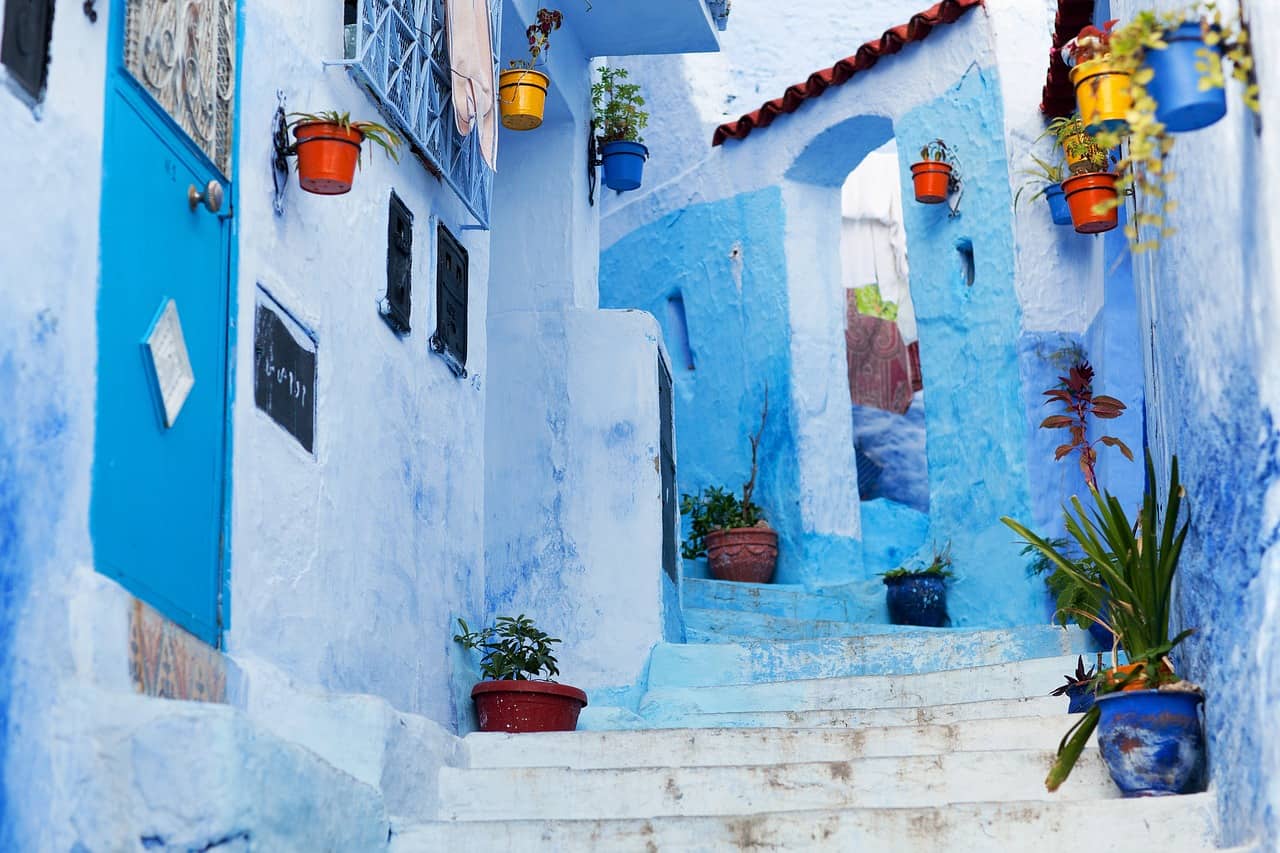
Chefchaouen is one of the most beautiful places in Morocco and perhaps in the entire world. The most famous feature of Chefchaouen is the stunning blue color that covers the walls of the entire city. That’s why the city is known as the Blue Pearl of Morocco. Nobody knows exactly why the residents started to paint the walls blue, but that just adds to the beautiful mystery of the city.
The best thing to do in Chefchaouen is to wander about the city taking as many photos as you possibly can. The locals are used to tourists, and the friendliest locals by far are the many cats that lounge about Chefchaouen. The blue paint sets off their fur to perfection.
Chefchaouen is also an excellent city for shopping. Indulge in some local beauty products made with argan oil or a handmade Moroccan rug from Berber artists. And for a delicious treat, buy some fresh bread from a local baker selling his or her wares at one of Chefchaouen’s communal ovens.
Chefchaouen is also home to many mosques. Don’t miss the Grand Mosque located in the main square, Place Uta el-Hammam.
Finally, explore the natural beauty of Chefchaouen’s setting in the Rif Mountains. These mountains are a popular spot for hiking, and they provide a perfect viewing point for taking pictures of Chefchaouen’s blue walls from above.
Chefchaouen is an easy trip from Tangier by taxi or bus. The voyage takes about two hours.
The Atlas Mountains

The Atlas Mountains surely are one of the most beautiful sights in Morocco. This mountain chain has mountains that go well over 4000 meters and is covered in thick vegetation, with rivers flowing through the valleys.
For the chance of taking in all the swiping views, pristine nature, peaceful atmosphere and to get to know the local Amazigh communities, you should consider going on a long-distance hike.
Over the course of 5 days, you will be walking across a bunch of local villages, through forests and along rivers, admiring snow-capped mountains, and getting to know the local people and culture.
The hike itself is moderate to difficult, depending on the day and on your level of fitness, and can’t be done independently – mostly because there are no accommodation options that can be easily booked by tourists. You will have to sleep and eat (the food is delicious, by the way!) with local families, in their sometimes incredibly modest homes – think sleeping on the floor, using a latrine, and using the hamam instead of a shower.
The starting point of this long-distance hiking trip in Morocco is usually Amizmiz, from where you will be walking to Ait Irghit, Infag, Tizgga, and Imintala before making your way back. These villages – home of the Amazigh communities (which are mistakenly addressed as Berbers, a name they don’t appreciate) – are usually set against the mountain and built in a way that completely blends with the background.
Dades Gorge

One of the greatest things about Morocco is its incredible diversity. Even on a short trip, it is possible to visit expansive deserts, shop in classic souqs, hike among dramatic mountains and laze on gorgeous beaches, all within days of each other.
One experience that is quintessentially Moroccan, however, is to explore one of the outstanding gorges along the eastern foothills of the Atlas Mountains. While there are several worth checking out (Todra Gorge is particularly pretty), the spectacular Dades Gorge is arguably the best of the bunch.
Featuring prototypically Moroccan oasis scenery – brown hills backed by a brilliant blue sky, split by a small silver creek lined with bright green fields – the Dades Gorge is a walking wonderland. Narrow, scenic hiking trails run all through this fabulously picturesque area, providing endless opportunities to wander through the natural beauty and quaint little villages. And avid hikers shouldn’t miss the impressive, slightly adventurous, Monkey Fingers trail that passes through fascinatingly unique rock and canyon terrain.
Unlike some of the other, more well-known, attractions of Morocco, the Dades Gorge sees relatively few tourists. The few hotels located right in the gorge are small, friendly places offering a personal touch and plenty of recommendations for what to see and do in the area.
Dades Gorge is also the perfect place to enjoy a break from the heat, as the temperatures at the top of the valley tend to be considerably lower than those in Marrakesh or the Sahara. Just don’t forget to bring a jacket to enjoy the chilly evenings!
Anti-Atlas Mountains

The Anti-Atlas Mountains are the most southerly range in Morocco, bordering the Sahara and boasting dramatic vistas, a warm climate, and a range of superb walking trails along palm tree-lined valleys. This beautiful part of the country is far away from the crowds of the cities and more popular tourist sights and is the sort of place you might not encounter fellow travelers outside of your hotel.
The mountains extend over 300km between Ouarzazate and the Atlantic coast and are home to Berber villages, hidden oases, and wide expanses of agricultural land. This is the real Morocco, and a good year-round destination, with the ideal time to visit is between September and April.
One of the most popular things to do here is hiking in the Ameln Valley, where you can see the majestic Lion’s Head rock formation and have a guided tour of a traditional Berber museum. Other places to visit include the famous Blue Painted Rocks and the Ait Mansour Gorge, a refreshing oasis in the rocky mountain landscape.
Just 3 hours from Agadir, the small market town of Tafraoute makes a great base. You will need either your own vehicle or a car and driver to access the Anti Atlas Mountains due to their remote location.
The roads are fairly simple to navigate and in reasonable condition, but just keep an eye out for other drivers who may not be quite so careful as you’d expect on the mountainous hairpins.
Siti Fatimah Waterfalls

Meknes

One of the most beautiful places to visit in Morocco is the imperial city of Meknes. It dates back almost 1,000 years and was the capital of Morocco for 55 years in the 17th century. Sultan Moulay Ismail, the ruler of Morocco in those days, had the vision to make Meknes the “Versailles of Morocco” and you can find the remnants of that vision in many places around the city.
Sadly, quite a few places got destroyed or at least damaged in a big earthquake in 1755, otherwise, Meknes would surely outshine Marrakech in its beauty.
There are a few must-see sights in Meknes, some in the oldest part of the city, the medina, and some more in the Ville Imperiale, where Moulay Ismail built his vision.
In the medina, be sure to visit the Medersa Bou Inania. It is one of the most beautiful Qur’an schools in Morocco and really well preserved. It shows the typical architecture and interior design of Moroccan buildings with a central courtyard surrounded by the school rooms, and small student rooms on the upper level. The walls are traditionally decorated with colorful tiles, cedar woodwork, and stucco.
In the Ville Imperiale, you should visit the Mausoleum of Moulay Ismail and his giant granary and horse stables. The best place to spend the evening is the central square Place el Hedim with a view of the magnificent city gate Bab Mansour. Enjoy a glass of fresh juice in one of the many roof-top cafés and watch the performers on the square.
Meknes is part of many tour itineraries, but if you travel independently, it is also easily reachable via train or bus. It is located on the Marrakech-Fes train line with trains running multiple times a day.
Fes
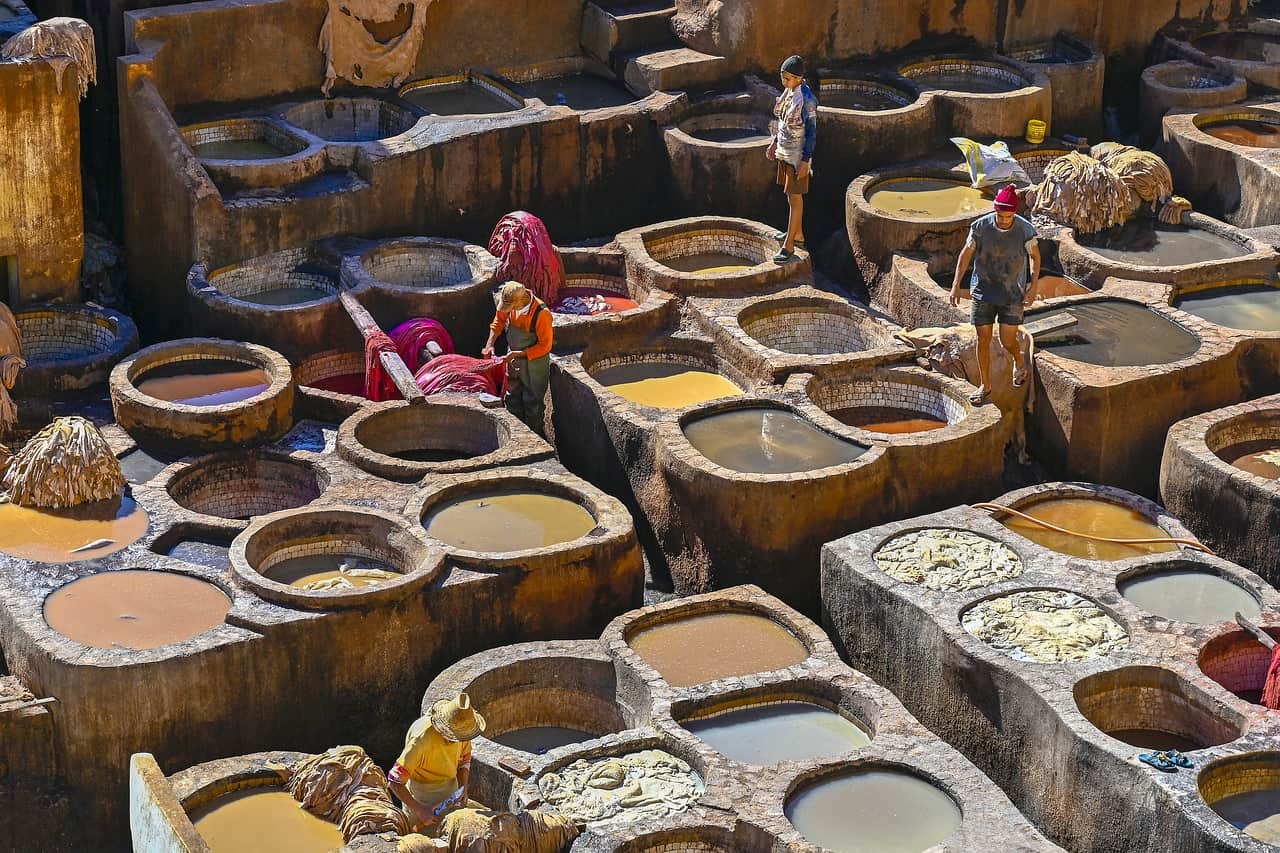
There are many reasons to put Fes on the Morocco bucket list, where it fits perfectly between the unforgettable experience in the Sahara desert and the escape to the mountains of Chefchaouen.
For starters, Fes is one of the former capitals of the country, with a rich history and the oldest university in the world. Plus, this is the city of artisan shops, with quarters dedicated to different crafts. Here, the locals produce carpets, wooden furniture, dyes, copper products, and fabrics.
Of course, there is one quarter in particular that attracts hundreds of curious visitors, and it is the tanning area. Its gem is Dar al-Dabbagh Shouara, the oldest tannery in the city. It recently got a massive investment from UNESCO for preserving the original art of tanning.
At first, the leather is soaked in the saline solution. Then, for a week, it is placed into the ammonium solution, and afterward, soaked in barrels with pigeon dung. Finally, the leather is rinsed and dyed, turning into a ready-to-use product of exceptional quality. It is highly valued in the House of Dior, one of many prominent customers of Dar al-Dabbagh Shouara.
Visiting the tanneries is not exactly a walk in the park, particularly due to a strong smell. Not even fresh mint will beat it. This is, however, is a very educational experience, as well, and the one you won’t get in many other countries around the world.
Getting to Fes is possible by buses and trains. It may also be a good idea to rent a car and to plan a circular route around the country.
Essaouira
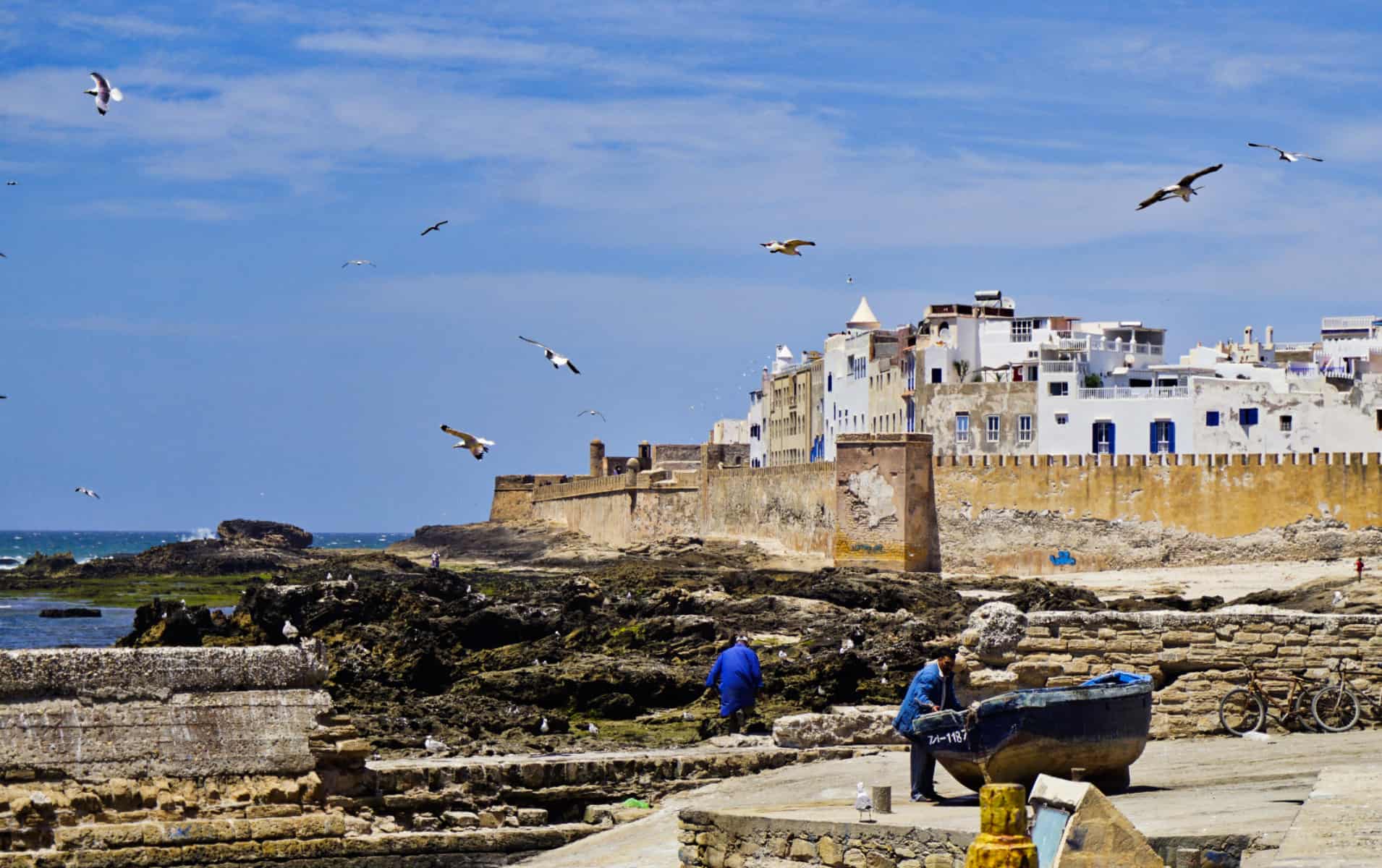
If you’re looking to escape the charmingly chaotic cities of Morocco, Essaouira is the place for you. Once famous as a hippie hangout (with the likes of Jimi Hendrix and Cat Stevens as frequent visitors), the city nowadays keeps the relaxing vibe. Between its vibrant white and blue palette, its walls and cannons, and its strong winds, it feels like nowhere else in the country.
Essaouira is a multicultural and multi-confessional center, representing its history well.
Even though archaeological research shows that the city has been occupied since prehistoric times, the modern version of it was built as a mix of European military architecture with the technics from the Arabic one. This means that you’ll encounter defensive cannons from the times of the Portuguese occupation to walls of the 18th-century fortification. For this reason, the Medina is a UNESCO World Heritage Site.
Unlike other Medinas in the country, Essaouira’s is easy to navigate, stretching from the northern gate, Bab Doukkala, to the main square, Place Moulay Hassan, by the waterfront. It has countless side streets, making it effortless to explore while keeping the feeling of getting lost in the souk.
Furthermore, Essaouira is known as the ‘Wind City of Africa’, which has made its beaches popular for surfing, windsurfing, and kitesurfing.
Essaouira has its own airport, connected to the city via shuttle bus. If you’re already in the country, the easiest way to reach it is from Marrakesh, on a three-hour bus or taxi ride. This is a great alternative since on the way there you’ll get to see the famous “goat trees”, a really special bucket list travel experience.
Ouarzazate

Although it may look like a sleepy town in the middle of the desert, Ouarzazate is the center of the movie industry in the region and one of the most beautiful places in Morocco. Atlas Studios, just outside the center of town, has produced over 200 Hollywood blockbusters including Gladiator, Ben Hur, and Game of Thrones.
Apart from its cinematic pedigree, there are a host of wonderful things to do in Ouarzazate. Kasbah Taourirt is a citadel in the center of town which was built on the fortunes of the Sahara trade route. Wander through the 300 rooms and maze of passageways inside to be transported to a different time.
But to fully appreciate the beauty of the area, drive 40 minutes from Ouarzazate to Flint Oasis. Here, a small local village is tucked into the sand dunes along a palm-fringed river.
Life seems to have changed very little from centuries gone by. Women work small fields; men herd goats and children pull faces from the backs of donkeys carrying them and their produce between the villages. In spring, the area is ablaze with the contrasting colors that typify the Moroccan scenery: dusty orange sand dunes, vibrant green foliage, and soft pink flowers.
Ouarzazate is about 4 hours’ drive from Marrakech.
Casablanca
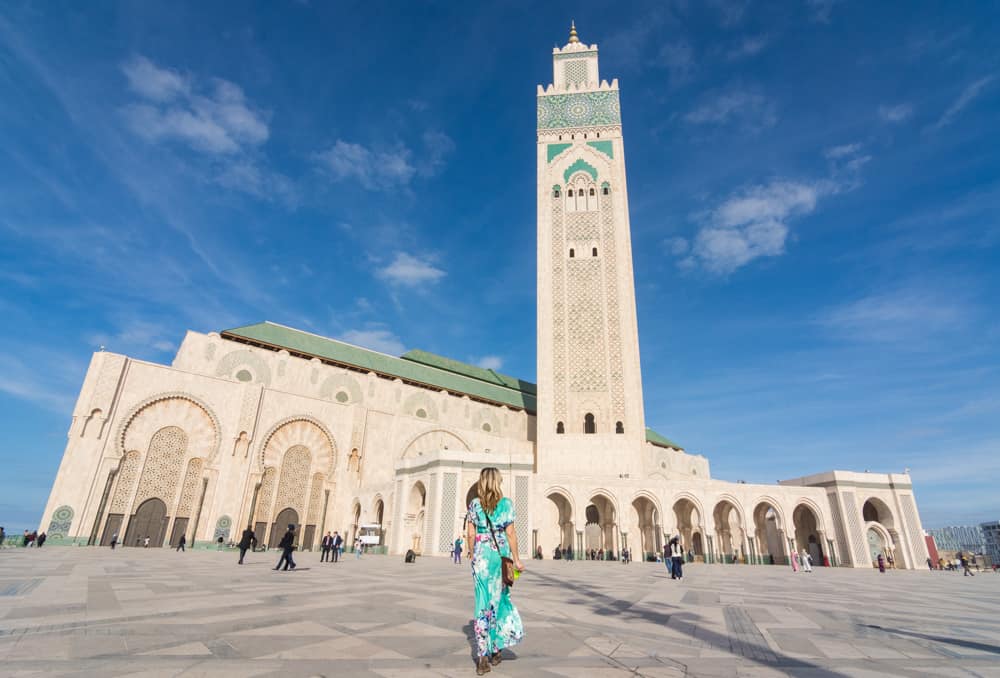
Tangier

Al Hoceima National Park

Al Hoceima National Park is beautifully situated in northern Morocco on the Mediterranean coast. Covering both land and marine life, the park is filled with wildlife, Berber villages, canyons, and astounding nature.
All crisscrossed with dirt paths and hiking trails. It is a truly beautiful spot, covering 180 square kilometers of coastline. The national park protects a large number of endangered wildlife species, among them Monk Seals and Ospreys.
There is no doubt you should add Al Hoceima National Park to your Morocco itinerary. Not only is it perfect for outdoor enthusiasts, but also wildlife lovers and those interested in the local culture. But the national park also protects a large Thuya Forest, where olive groves grow and ancient caves are hidden.
Bades Island is particularly beautiful. The tiny peninsula, only attached to the mainland with a small strip of sand, makes a beautiful scenery and the perfect lunch spot.
You can easily get to Al Hoceima National Park from Al Hoceima, which has its own international airport. Otherwise, you will have to drive, as bus connections are poor. You can stay either in Al Hoceima, Cala Iris, or any of the Berber villages in the park.
Marrakech
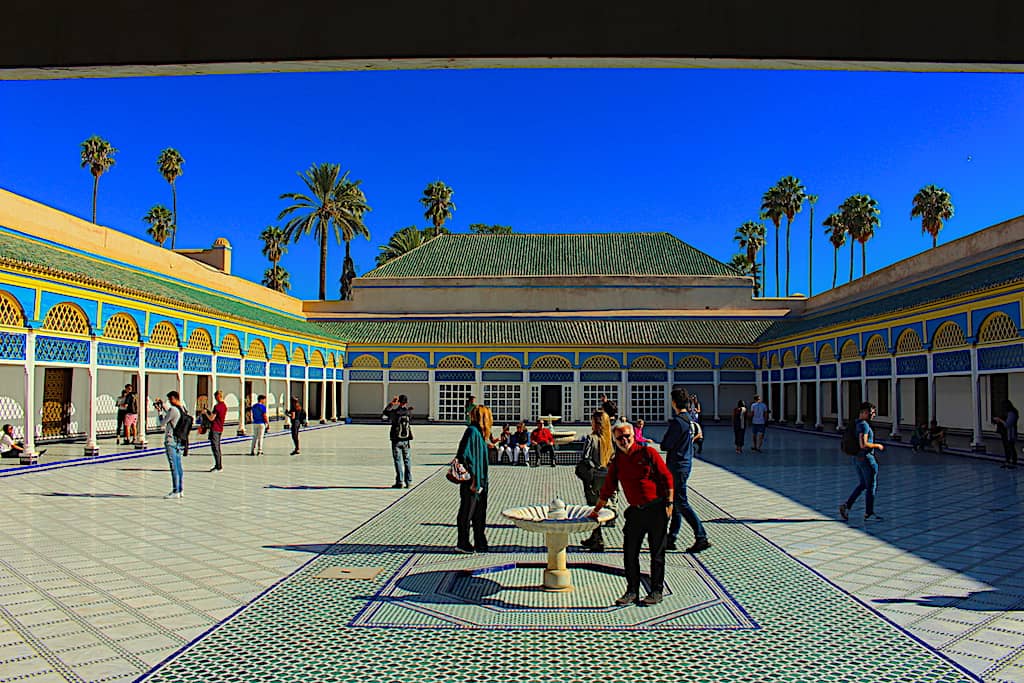
One of the most beautiful cities in all of Morocco is the famous city of Marrakech. The destination is simply gorgeous and whether you’re exploring the bazaar or visiting the grandiose palaces or magnificent mosques, the beauty is everywhere you look.
One landmark in Marrakech that should be on any travel itinerary is the stunning Koutoubia mosque. The religious building displays the tallest tower in Morocco and is a staple of the city’s skyline. It was built in the 12th century and is one of the country’s most iconic buildings. It’s surrounded by lush gardens, parks, and green spaces which makes it even more impressive and beautiful.
The Saadian tombs are another beautiful place to visit and were built as the final resting place of a sultan in the Saadian dynasty. The sultan and 60 family members and servants were laid to rest in the mausoleum. Interestingly, the 15th-century tombs were forgotten about and lost to time for centuries. They were rediscovered in 1917 and required excavation and restoration, but today they are open to the public. The beauty of the tiled mosaics and intricate wood carvings displays the opulence and power of the sultan.
Bahia Palace is another enchanting place of beauty in Marrakech. The 19th-century palace features courtyards, gardens, mosaics, and brilliant architecture. Walking through the former residence is incredible and it’s a must-see stop for any Marrakech itinerary.
Agafay
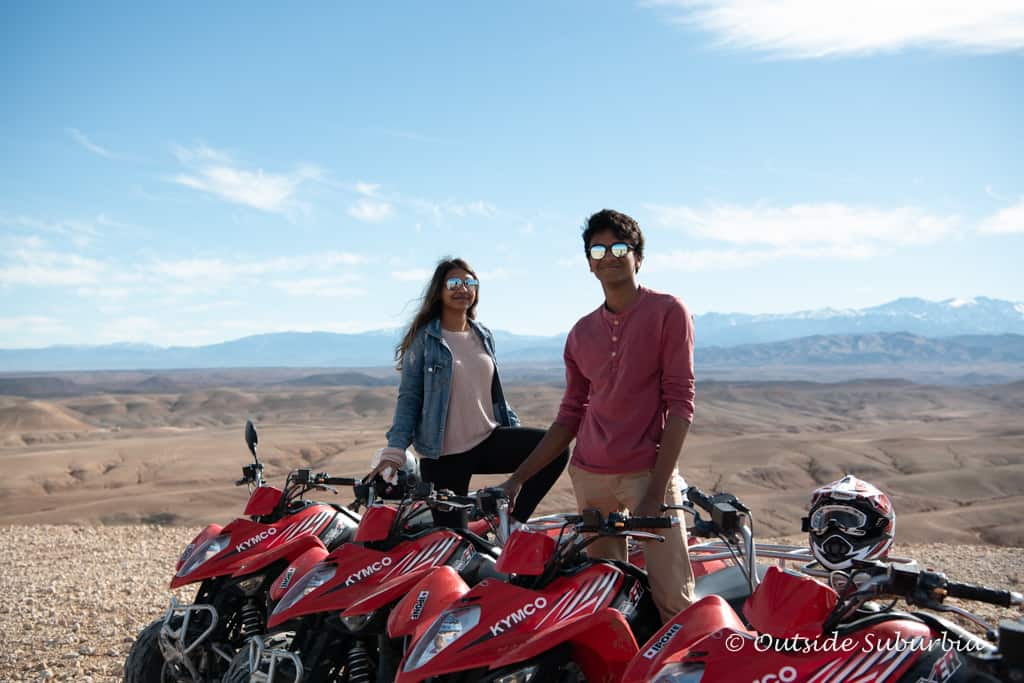
Aït Benhaddou

The historic UNESCO village of Aït Benhaddou is hidden deep in the southern desert and is one of Morocco’s most impressive historic landmarks. Dating back to the 12th century, this ksar (fortress village) is located along the ancient caravan route between Marrakech and the Sahara, and can be visited as a day trip from Marrakech.
The ksar is made from red clay and mudbrick and is a striking example of authentic southern Moroccan architecture. Located on the slopes of a hill next to the Ounila River, the dwellings range from modest houses to tall structures with towers, and there are cafes and souvenir stalls dotted throughout the village. The short hike to the top of the hill is totally worth it for incredible and beautiful views of the valley, palm groves, and mountain villages.
The ksar has been significantly restored in modern times and Ait Benhaddou is now a popular filming location. Many film fans will recognize Ait Benhaddou as a key location for the movies Lawrence of Arabia, The Mummy and Gladiator, plus the Game of Thrones TV series.
The drive to Aït Benhaddou from Marrakech is 3 to 4 hours long, so a visit there will take a full day. The easiest way to reach there is by joining a tour group that will pick up and drops you off in Marrakech.



